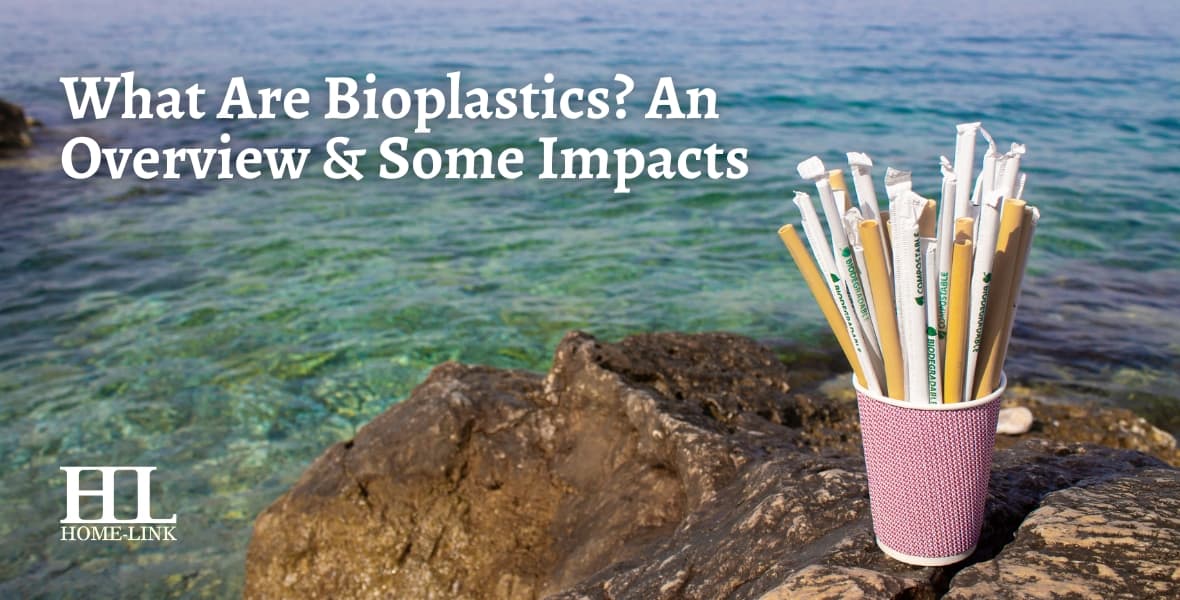Increased government regulation of plastic waste and an increase in awareness of its toxicity have led to an increase in investment and interest in bioplastics, which is expected to increase by 10% to 14% from 2020 to 2025. This growth could help solve one of the world’s biggest environmental issues: plastic pollution.
Bioplastics are created from renewable biological materials, often plant materials, waste, or microbes rather than petroleum or natural gas. Some bioplastics are better for the environment than other bioplastics, but not all of them are as beneficial. The method by which bioplastics are created determines whether they are good for the environment.
The bioplastics industry is young; only 1% of the world’s plastic was made from bioplastics in 2019. There is currently little standardization in identifying materials, plastic types, or labeling what is biodegradable or compostable, which makes it challenging for consumers to determine whether they are making an environmentally beneficial choice by choosing bioplastics over fossil-based ones.
Due to the increasing toxicity of plastics and the government’s regulation of plastic waste, the bioplastics industry is anticipated to flourish by 10% to 14% from 2020 to 2025. Plastic pollution might be solved by this expansion.
The Harm of Plastic Degradation
The Great Pacific Garbage Patch is the most visible sign of marine plastic pollution worldwide. According to the EPA, only 1% of the 36 million tonnes of plastic produced in the U.S. every year gets recycled, and only 9% is recycled worldwide. Only a small percentage of plastic is recycled worldwide, and only 9% is recycled in the U.S.6
Each year, 11 million tonnes of plastic waste enter the oceans. More plastic waste is generated from terrestrial sources, where it breaks down into smaller and smaller components known as microplastics. There are up to 51 trillion microplastic particles in our oceans, averaging 883 per day. Microplastics can have detrimental health effects on marine and terrestrial animals, ranging from immune responses to toxic contamination. 89 To malnutrition and starvation.
How Are Bioplastics Produced?
The creation of plastic products from polymers extracted from biomass is based on the idea that polymers can be derived from biomass (complex chains of molecules). First-generation biomass, including corn, sugarcane, and vegetable oils, may be used to create plastic products. Because it may affect food security, producing bioplastic from first-generation biomass on land that may be used to grow food is controversial.
Second-generation biomass refers to waste materials from agriculture, industry, cooking, food, foresting, and municipal landfills. There is no food produced from it. It includes seaweed, cyanobacteria, and microalgae. Because it is grown in wastewater, the cultivation of microalgae, which is included in third-generation biomass, does not threaten other land uses.
Bioplastic polymers can be created from used or recycled bioplastics, helping to create a circular economy. A flexible, semitransparent plastic in a scientist’s hands.
How Do Bioplastics Affect the Environment?
The production of fossil fuels-based plastics accounts for 3.4% of the world’s yearly greenhouse gas emissions (excluding emissions from burning plastic waste). Approximately two-thirds (63%) of polymers produced before reaching the plastics factory already contribute to greenhouse gas emissions (excluding incineration). Incinerating polymers rather than recycling them accounts for another 15% of waste management emissions.
Reducing the industry’s carbon footprint would be a lot easier if bioplastics were not produced from first-generation sources like corn or sugarcane, for which there would be a roughly 25% reduction in GHG emissions. Switching from fossil polymers to biomass polymers would have a much more significant impact than switching from plastic to bioplastic since renewable, non-carbon energy sources would reduce plastic’s carbon footprint by 62%.
Bioplastics, as opposed to fossil plastics, can much more easily be part of a circular economy because waste sources can be neutral in terms of carbon, thus increasing the overall “lowest global warming impact” of second-generation bioplastics. Third-generation bioplastics are less studied, but they have great potential to reduce carbon emissions even further. Cyanobacteria and algae remove more CO2 from the atmosphere than they produce as biomass, meaning their bioplastics feedstock is carbon-negative.
Are Bioplastics Made from Biofuels? To answer this question, we first need to understand what biofuels are.
Researchers found that “there was no way to definitively declare any polymer type as having the least environmental impact in any category.” 60% of bioplastic is non-degradable, resulting in criticism from environmental groups, bans in cities like San Francisco, and low adoption rates due to a lack of bioplastic options.
Some confusion and criticism is stemming from the fact that “bioplastic” and “biodegradable” may refer to a range of different things. The following is a list of the least sustainable to the most:
The lack of clear definitions may cause consumers to be confused and may also persuade them that the goods they are purchasing are more environmentally friendly than they are. The definitions set out by the European Union’s Product Environmental Footprint standards are an important step in the right direction toward increasing bioplastic use and reducing greenwashing.
The 2020 European Union Circular Economy Action Plan aimed to improve plastic bio-based material labeling to clarify that bio-based feedstock produced environmental benefits other than just replacing fossil resources and “biodegradable” and “compostable” meant degradable within 12 weeks, not over hundreds or thousands of years.
The Future of Bioplastics.
With the development of fossil-based plastics, humans, animals, and the planet have suffered tremendously. In addition to being a carbon-negative circular economy, bioplastics can help clean up what has become one of the world’s worst environmental issues. To accomplish this, several actions must be taken: Most biodegradable plastics break down, but not all biodegradable plastics are compostable. Biodegradation signifies the process by which the parts of a substance break down. Bioplastics, which include compostable and biodegradable plastic, degrade over time if they are exposed to temperatures of 60 degrees C (140 degrees F) for at least four days. Please recycle your bioplastics at an industrial composting site.

